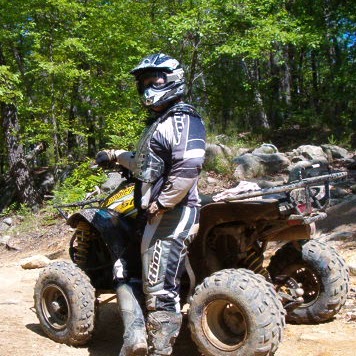John N Mcmurray
age ~55
from Cleveland, OH
- Also known as:
-
- John C Mcmurray
- John Mc Murray
- John Murray
- Phone and address:
-
31740 Shaker Blvd, Cleveland, OH 44124
(216)8311048
John Mcmurray Phones & Addresses
- 31740 Shaker Blvd, Cleveland, OH 44124 • (216)8311048
- Pepper Pike, OH
- 1415 N Taft St APT 876, Arlington, VA 22201
- 31740 Shaker Blvd, Pepper Pike, OH 44124
Work
-
Address:Po Box 17024, Arlington, VA 22216
Ranks
-
Licence:Massachusetts - Active
-
Date:2013
Specialities
Buyer's Agent • Listing Agent
Isbn (Books And Publications)


Medicine Doctors

John E. Mcmurray
view sourceSpecialties:
Otolaryngology, Plastic Surgery within the Head & Neck
Work:
Wilmington Ear Nose/ThroatWilmington Ear Nose & Throat Associates PA
2311 Delaney Ave, Wilmington, NC 28403
(910)7628754 (phone), (910)7620778 (fax)
Wilmington Ear Nose Throat Associates
8068 Market St, Wilmington, NC 28411
(910)6811488 (phone), (910)6811490 (fax)
2311 Delaney Ave, Wilmington, NC 28403
(910)7628754 (phone), (910)7620778 (fax)
Wilmington Ear Nose Throat Associates
8068 Market St, Wilmington, NC 28411
(910)6811488 (phone), (910)6811490 (fax)
Education:
Medical School
University of North Carolina School of Medicine at Chapel Hill
Graduated: 1980
University of North Carolina School of Medicine at Chapel Hill
Graduated: 1980
Procedures:
Allergen Immunotherapy
Allergy Testing
Hearing Evaluation
Inner Ear Tests
Myringotomy and Tympanotomy
Rhinoplasty
Sinus Surgery
Skull/Facial Bone Fractures and Dislocations
Tonsillectomy or Adenoidectomy
Tracheostomy
Tympanoplasty
Allergy Testing
Hearing Evaluation
Inner Ear Tests
Myringotomy and Tympanotomy
Rhinoplasty
Sinus Surgery
Skull/Facial Bone Fractures and Dislocations
Tonsillectomy or Adenoidectomy
Tracheostomy
Tympanoplasty
Conditions:
Acute Otitis Externa
Acute Pharyngitis
Acute Sinusitis
Acute Upper Respiratory Tract Infections
Allergic Rhinitis
Acute Pharyngitis
Acute Sinusitis
Acute Upper Respiratory Tract Infections
Allergic Rhinitis
Languages:
English
Description:
Dr. McMurray graduated from the University of North Carolina School of Medicine at Chapel Hill in 1980. He works in Wilmington, NC and 1 other location and specializes in Otolaryngology and Plastic Surgery within the Head & Neck. Dr. McMurray is affiliated with New Hanover Regional Medical Center and New Hanover Regional Medical Center Orthopedic Hospital.

John Mark McMurray
view sourceSpecialties:
Radiology
Diagnostic Radiology
Diagnostic Radiology
Education:
University of Mississippi(1980)
Name / Title
Company / Classification
Phones & Addresses
Owner / Manager
Humperdink's Texas LLC
Humperdink's Beltline Rd.. Humperdink's Greenville Ave.. Humperdink's N. Central Exp.. Humperdink's Six Flags. Humperdink's W. Northwest Hwy
Restaurants
Humperdink's Beltline Rd.. Humperdink's Greenville Ave.. Humperdink's N. Central Exp.. Humperdink's Six Flags. Humperdink's W. Northwest Hwy
Restaurants
2208 W. Northwest Highway, #200, Dallas, TX 75220
(214)3530500, (214)3530524
(214)3530500, (214)3530524
J MAC TRUCKING LLC
PREBLE LOGISTICS LLC
Us Patents
-
Reference Pools As Credit Enhancements
view source -
US Patent:7099843, Aug 29, 2006
-
Filed:Mar 14, 2002
-
Appl. No.:10/096584
-
Inventors:Henry James Cassidy - Arlington VA, US
David Kevin Horne - Arlington VA, US
Tyler Taile Yang - Potomac MD, US
John Patrick McMurray - McLean VA, US -
Assignee:Freddie Mac, The Federal Home Loan Mortgage Co. - McLean VA
-
International Classification:G06F 17/60
-
US Classification:705 38, 705 35, 705 36 R
-
Abstract:The disclosed systems and methods for hedging risk of differential loss related to separate pools of loan investments use criteria established by the parties for hedging risk of differential loss rates. The system monitors indirect performance indicators for a Reference Pool and a Subject Pool of loans, compares the indicators, and calculates a payment due between the parties (if any) based on performance differences for the two pools and a payment formula. Any payment due is paid according to a pre-established payment cycle. The loan pools may be formed and adjusted based on various factors, such as to compensate for changes in one of the pools. The payment formula may also be adjusted to compensate for changes or differences in the loan pools. The system may hedge either party's credit loss related to the Subject Pool if its loans perform differently than the loans in the Reference Pool.
-
Prevailing Torque Lock Nut And Method Of Forming Same
view source -
US Patent:43522190, Oct 5, 1982
-
Filed:Apr 7, 1981
-
Appl. No.:6/251779
-
Inventors:John C. McMurray - Painesville OH
Arthur G. Kudelko - Mentor OH -
International Classification:B21D 5320
-
US Classification:10 86A
-
Abstract:A tri-lobular, all metal, prevailing torque nut is disclosed providing a cone having three locking sections, each of which extends around the threaded opening for about one-third of the surface of its thread. Each locking section provides a minimum radial distance at its center and extends with gradually increasing radial distance to the ends thereof. When the nut is threaded onto a mating threaded fastener, portions of each locking section are radially displaced from their unstressed condition to the circular shape of the mating fastener, producing frictional engagement between the nut and the fastener to resist unintentional loosening. Each locking section is arranged so that it provides a maximum resistance to deflection at its center and decreasing resistance to deflection at locations progressively spaced from the center so that excessive pressures are not developed which would tend to produce excessive wear or permanent deformation. Consequently, the locking torque or friction is maintained at satisfactory levels, even when the nut is assembled and disassembled with a mating threaded fastener a number of times. The nut is produced by forming a nut blank with a cone having three lobes symmetrically positioned around the cone which are deformed radially inward during staking to produce the locking sections along the threaded passage adjacent to the cone end of the nut.
-
Locking Fastener
view source -
US Patent:42201888, Sep 2, 1980
-
Filed:Jul 10, 1978
-
Appl. No.:5/923330
-
Inventors:John C. McMurray - Painesville OH
-
Assignee:Russell, Burdsall & Ward Corporation - Mentor OH
-
International Classification:F16B 39282
-
US Classification:151 37
-
Abstract:A self locking threaded fastener is disclosed wherein the self locking system includes a plurality of bearing surfaces contained within a bearing plane and positioned in an annulus around the thread means. Extending inwardly from each bearing surface is a ramp surface which is inclined inwardly and back from the bearing plane. An axially extending shoulder joins one edge of each ramp surface. When the fastener is tightened against a mating part to clamp such part, the engagement causes sufficient pressure to displace material of the mating part by cold flow or other type of displacement into the recesses between the ramp surfaces and shoulders. Continued tightening rotation does not encounter excessive torque since the ramp surfaces provide a camming action but loosening rotation is resisted by the interference between the displaced material and the shoulders. As displacement occurs, additional portions of the ramp surface engages displaced material to increase the effective bearing area and locking interference and provide a self limiting action with respect to the extent the fastener embeds in the mating surface.
-
Prevailing Torque Lock Nut And Method Of Forming Same
view source -
US Patent:42917379, Sep 29, 1981
-
Filed:Mar 5, 1979
-
Appl. No.:6/017611
-
Inventors:John C. McMurray - Painesville OH
Arthur G. Kudelko - Mentor OH -
Assignee:Russell, Burdsall and Ward Corporation - Mentor OH
-
International Classification:F16B 39284
-
US Classification:411282
-
Abstract:A tri-lobular, all metal, prevailing torque nut is disclosed providing a cone having three locking sections, each of which extends around the threaded opening for about one-third of the surface of its thread. Each locking section provides a minimum radial distance at its center and extends with gradually increasing radial distance to the ends thereof. When the nut is threaded onto a mating threaded fastener, portions of each locking section are radially displaced from their unstressed condition to the circular shape of the mating fastener, producing frictional engagement between the nut and the fastener to resist unintentional loosening. Each locking section is arranged so that it provides a maximum resistance to deflection at its center and decreasing resistance to deflection at locations progressively spaced from the center so that excessive pressures are not developed which would tend to produce excessive wear or permanent deformation. Consequently, the locking torque or friction is maintained at satisfactory levels, even when the nut is assembled and disassembled with a mating threaded fastener a number of times. The nut is produced by forming a nut blank with a cone having three lobes symmetrically positioned around the cone which are deformed radially inward during staking to produce the locking sections along the threaded passage adjacent to the cone end of the nut.
Resumes

Eastern Regional Sales Manager At Skullcandy Inc.
view sourcePosition:
Eastern Regional Sales Manager at Skullcandy Inc.
Location:
New York, New York
Industry:
Consumer Electronics
Work:
Skullcandy Inc. since Oct 2010
Eastern Regional Sales Manager
Philips Consumer Lifestyle Oct 2009 - Sep 2010
National Account Manager
Philips Consumer Lifestyle Jun 2008 - Sep 2009
Customer Marketing Manager
DLO Sep 2006 - Jun 2008
Inside Sales
Eastern Regional Sales Manager
Philips Consumer Lifestyle Oct 2009 - Sep 2010
National Account Manager
Philips Consumer Lifestyle Jun 2008 - Sep 2009
Customer Marketing Manager
DLO Sep 2006 - Jun 2008
Inside Sales
Education:
University of North Carolina at Chapel Hill 2002 - 2006
BA, Psychology
BA, Psychology

Student At Georgetown University Law Center
view sourceLocation:
Washington D.C. Metro Area
Industry:
Legal Services
Education:
Georgetown University Law Center 2007 - 2010

John Mcmurray
view sourceLocation:
United States

John Mcmurray
view sourceLocation:
United States

Student At Georgetown University Law Center
view sourceLocation:
Washington D.C. Metro Area
Industry:
Internet
Work:
SCD 1996 - 2010
Freelance
Congressional Budget Office May 2000 - May 2003
Assistant Analyst
Freelance
Congressional Budget Office May 2000 - May 2003
Assistant Analyst
Education:
Georgetown University Law Center 2007 - 2011
Columbia University - Graduate School of Journalism 2005 - 2006
M.S., Journalism Princeton University 1991 - 1995
A.B., Woodrow Wilson School University School
Columbia University - Graduate School of Journalism 2005 - 2006
M.S., Journalism Princeton University 1991 - 1995
A.B., Woodrow Wilson School University School

John Mcmurray
view sourceLocation:
United States

John Mcmurray
view sourceLocation:
United States
Lawyers & Attorneys

John N. McMurray, Arlington VA - Lawyer
view sourceAddress:
Po Box 17024, Arlington, VA 22216
(646)6782381 (Office)
(646)6782381 (Office)
Licenses:
Massachusetts - Active 2013
Plaxo

John McMurray
view sourceSister Bay, Wisconsin

John McMurray
view sourcelaval

John McMurray
view sourceS.E. USASales Engineer at Carotron, Inc.

John McMurray
view source
John McMurray
view source
John J. Mcmurray
view source
John McMurray
view source
John McMurray
view source
John McMurray
view source
John McMurray
view source
John Mcmurray
view sourceYoutube
Classmates

John McMurray II
view sourceSchools:
Cortez High School Phoenix AZ 1976-1980
Community:
Jeri Sansum

John McMurray
view sourceSchools:
Upper Southampton-Warminster High School Southampton PA 1944-1948
Community:
Lueck Daly

John McMurray
view sourceSchools:
Harrisonburg High School Harrisonburg VA 1981-1985
Community:
Libby Hobbs, Robert Campbell, Robin Maloney

John McMurray
view sourceSchools:
Ray High School Kearny AZ 1990-1994
Community:
Frank Buso, Kimberly Holmes, Viola Aguirre, Sandy Redwine, Jacqueline Lawhon

John McMurray
view sourceSchools:
Argyle High School North Vancouver Saudi Arabia 1987-1991
Community:
David Christensen

John McMurray
view sourceSchools:
Phillips - Osborne School Painesville OH 1980-1984
Community:
Robert Fischer, Susanne Rattray, Andy Lauer

John McMurray
view sourceSchools:
Earl Haig Secondary School Toronto Morocco 1980-1982, Lindsay Collegiate & Vocational Institute Lindsay Morocco 1980-1984
Community:
Kathleen Lindsey, Paul Guerin, Scott Forbes, Bob Czaskos, Gregory Faraday

John McMurray
view sourceSchools:
Lakenheath American High School Lakenheath CT 1984-1988
Community:
Christopher Spencer, Rachel Evans
News

New Drug from Novartis Can Reduce Heart Failure Cases
view source- According to Milton Packer of University of Texas, once the product becomes available, physicians would use this drug and replace the use of traditional drugs to treat heart failure. Alongside Packer is John Mcmurray from the University of Glasgow who took part in testing the experimental drug.
- Date: Sep 02, 2014
- Category: Health
- Source: Google
Myspace
Flickr
Googleplus

John Mcmurray
Work:
Chevron Canada (1989-1995)
Landmark Graphics (1995-2013)
Halliburton (2000-2013)
Chevron
Landmark Graphics (1995-2013)
Halliburton (2000-2013)
Chevron
Education:
Lacombe Composite - Matriculation, University of Calgary - Engineering, Athabasca University - MBA

John Mcmurray
Work:
Subway
Education:
Riverside Community College

John Mcmurray

John Mcmurray

John Mcmurray

John Mcmurray

John Mcmurray

John Mcmurray
Get Report for John N Mcmurray from Cleveland, OH, age ~55
















